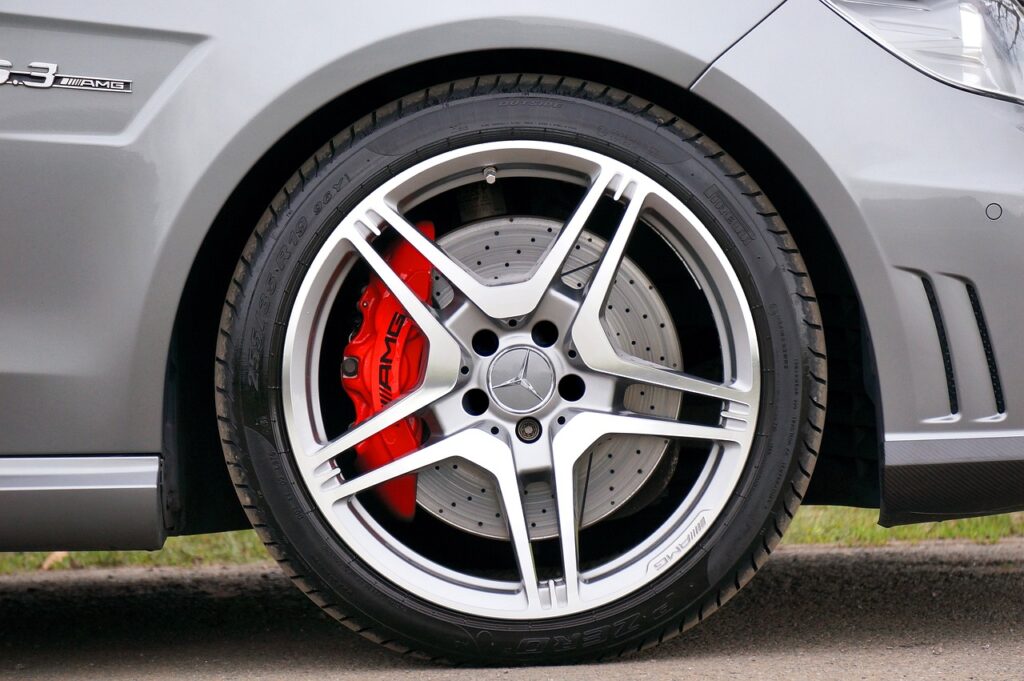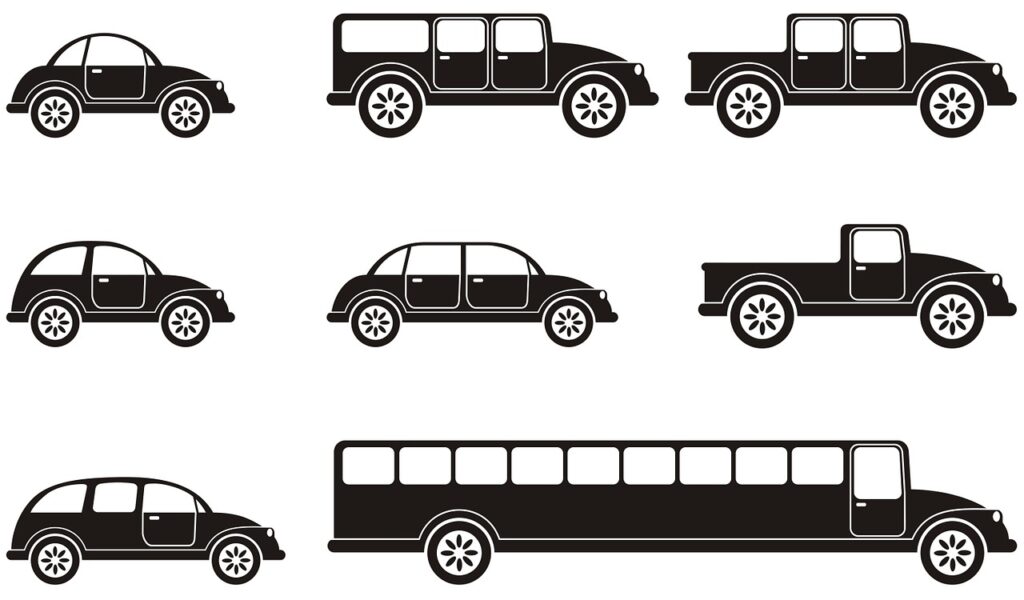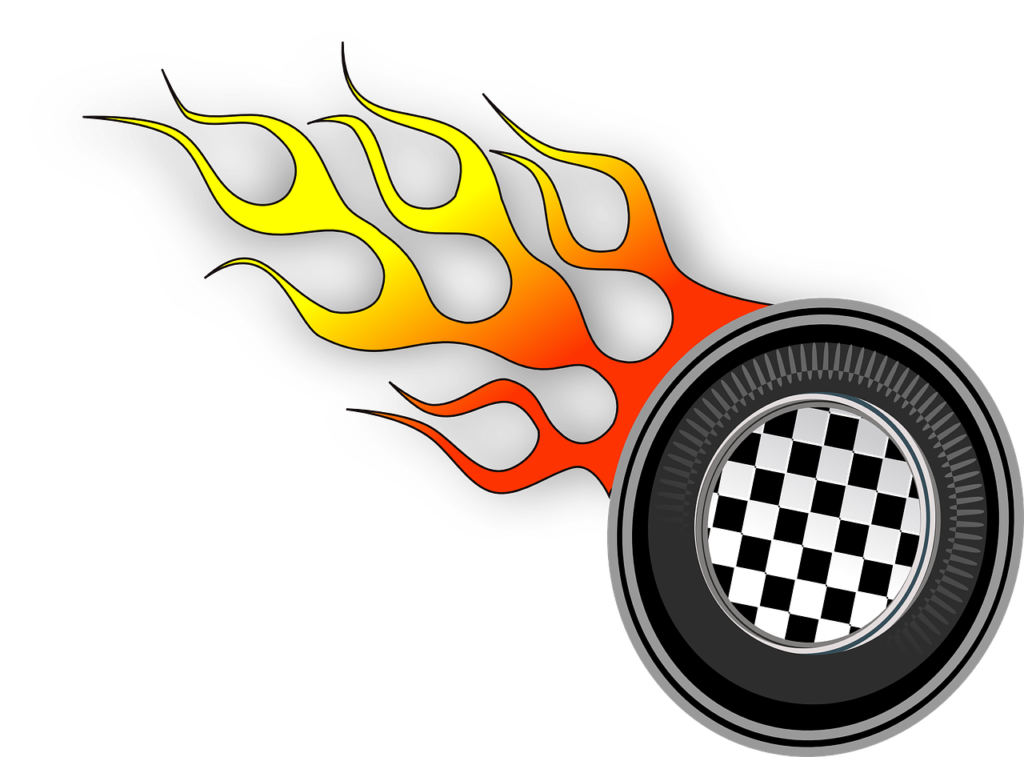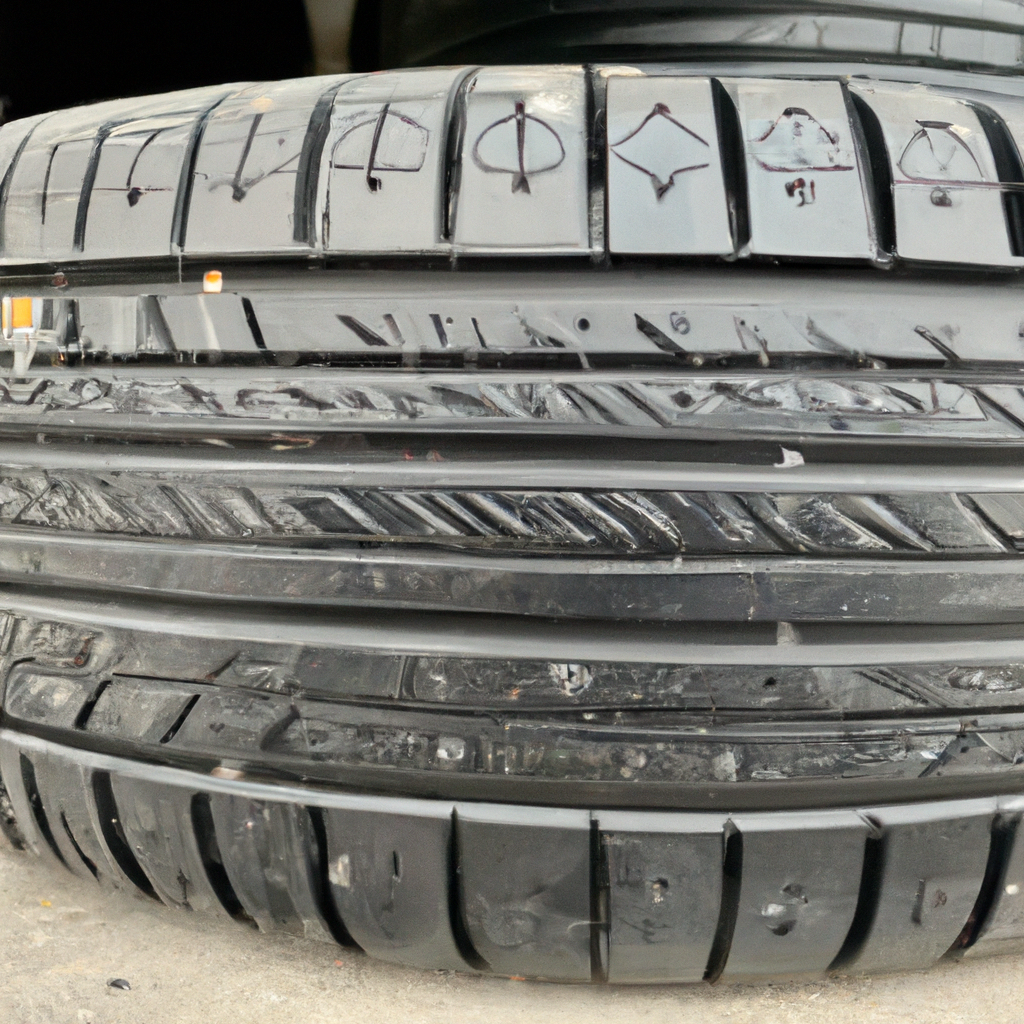Imagine driving down the road and suddenly, you hear a loud pop. Your heart starts racing, wondering if you’ve just experienced a blowout. But wait, what if that sound didn’t mean a complete disaster? Enter run-flat tires, the lifesavers of the road. These innovative tires are designed to keep you rolling, even after a puncture. But how exactly do they differ from conventional tires? Well, get ready to be impressed as we take a closer look at the fascinating design elements that set run-flat tires apart from their traditional counterparts.

Design of Run-Flat Tires
Run-flat tires are specially designed to allow a vehicle to continue driving even after a tire has deflated. This is achieved through various design elements that differentiate them from conventional tires. In this article, we will explore the construction, benefits, challenges, and future developments of run-flat tires, as well as their impact on driving performance, testing and standards, and their role in emergency situations.
Tire Construction
The construction of run-flat tires incorporates several key features that enable them to operate without air pressure. One essential aspect is the reinforced sidewalls, which provide structural support and prevent the tire from collapsing when deflated. Additionally, the tread of run-flat tires tends to be thicker than that of conventional tires, ensuring longevity and reliability in the event of a puncture. Furthermore, larger bead areas are present in run-flat tires, improving their ability to remain securely attached to the wheel even with reduced air pressure. Lastly, run-flat tires often have enhanced heat dispersion properties to prevent excessive heat build-up while driving.
Sidewall Reinforcement
One of the primary differences between run-flat tires and conventional tires is the reinforced sidewalls found in run-flat designs. These reinforced sidewalls provide crucial support and strength, allowing the tire to maintain its shape and carry the weight of the vehicle even after a loss of air pressure. This feature ensures that even with a flat tire, you can continue driving for a limited distance at reduced speeds, giving you the opportunity to reach a safe location or a service center.
Support Ring
Some run-flat tire designs incorporate a support ring, also known as a support insert or a flange ring. This ring is typically made of a strong, heat-resistant material and is located within the tire, providing additional support. When a tire experiences a loss of air pressure, the support ring helps to bear the weight of the vehicle, keeping the tire in its proper position and preventing it from collapsing. This added reinforcement ensures that you can drive safely and maintain control of your vehicle even with a damaged tire.
Internal Support Systems
Run-flat tires may also utilize internal support systems to ensure their continued performance in the event of deflation. These support systems can include advanced technologies such as self-supporting run-flat tires or auxiliary supported run-flat tires. These systems can improve the ability of the tire to maintain its shape and carry the weight of the vehicle, further enhancing safety and reliability.
Differences in Construction
Apart from the specific design features discussed above, run-flat tires also differ from conventional tires in several other construction aspects. For example, the reinforced sidewalls of run-flat tires are typically thicker and made of stronger materials compared to conventional tire sidewalls. This added thickness and strength provide the necessary support to ensure the tire can safely function with low or no air pressure.
Reinforced Sidewalls
Reinforced sidewalls are a defining characteristic of run-flat tires. As mentioned earlier, these sidewalls are thicker and composed of robust materials to withstand the weight of the vehicle when the tire is deflated. This reinforcement allows the tire to maintain its shape, preventing it from collapsing and improving overall safety.
Thicker Tread
Another difference in construction is the thicker tread found in run-flat tires. This thicker tread provides additional puncture resistance and durability, ensuring that even when a tire is compromised, it can still perform reliably for a certain distance. The increased thickness also helps to dissipate heat generated during driving, improving the tire’s overall performance and longevity.
Larger Bead Areas
Run-flat tires often have larger bead areas compared to conventional tires. The bead is the part of the tire that grips the wheel rims and helps maintain a secure connection. With larger bead areas, run-flat tires can better maintain their position on the wheel, even with low or no air pressure. This enhanced connection reduces the risk of the tire detaching from the rim when driving with a deflated tire.
Heat Dispersion Properties
Heat dispersion properties are another important consideration in the construction of run-flat tires. When a tire operates with low or no air pressure, heat can build up easily, leading to tire failure or reduced performance. Run-flat tires are designed to disperse heat more efficiently, helping to prevent excessive heat build-up, especially during extended driving with a deflated tire. This feature contributes to the tire’s durability and safety.
Benefits of Run-Flat Tires
The design of run-flat tires offers several advantages over conventional tires, providing improved safety, reduced vehicle weight, convenience, and cost efficiency for drivers.
Improved Safety
One of the primary benefits of run-flat tires is the enhanced safety they provide. With run-flat tires, even if you experience a sudden loss of air pressure, you can still continue driving for a limited distance, allowing you to reach a safe location or a service center without having to pull over on a busy road or in an unsafe area. This feature reduces the risk of accidents caused by abrupt stops or the need for immediate tire changes in potentially dangerous situations.

Reduced Vehicle Weight
Run-flat tires can contribute to reduced vehicle weight compared to carrying a spare tire and jack. With no need to include these items in the vehicle, manufacturers can design lighter and more fuel-efficient cars. Reduced vehicle weight not only improves fuel efficiency but can also enhance overall handling and performance.
Convenience
The convenience of run-flat tires cannot be overstated. Not having to deal with a flat tire in the middle of a journey provides peace of mind and saves you from the hassle of changing a tire yourself or waiting for roadside assistance. Being able to continue driving to a nearby service center or your destination without interruption is a significant convenience that run-flat tires offer.
Cost Efficiency
While run-flat tires may initially have a higher purchase price compared to conventional tires, they can offer long-term cost savings. With run-flat tires, you eliminate the need to purchase a spare tire, jack, and other equipment required for tire changes. Additionally, run-flat tires can potentially reduce the likelihood of tire damage, as they are less susceptible to punctures and blowouts. The reduced risk of tire damage translates to fewer replacement costs and lower overall maintenance expenses.
Challenges and Limitations
While run-flat tires offer numerous advantages, they also come with a few challenges and limitations that need to be considered.
Ride Comfort
Run-flat tires are known to provide a firmer ride compared to conventional tires. The reinforced sidewalls and other support features that enable run-flat tires to function with low or no air pressure can result in a stiffer and less cushioned ride. However, tire manufacturers are continuously working on improving the comfort aspects of run-flat tires, aiming to provide a balance between safety and ride quality.
Limited Distance and Speed
Although run-flat tires allow you to continue driving after a loss of air pressure, there are limitations to consider. The distance and speed you can drive on a deflated run-flat tire are typically limited. These limitations are set by tire manufacturers and vary depending on the specific tire model and brand. It is crucial to familiarize yourself with the recommended guidelines provided by the manufacturer to ensure safe and proper usage.

Repair Options
Run-flat tires are not always repairable, depending on the extent of the damage. In some cases, sidewall punctures or other structural damage may require tire replacement rather than repair. Additionally, not all tire repair shops are equipped to handle run-flat tire repairs, so it’s essential to have access to certified technicians who can properly assess and address any tire damage.
Compatibility with Tire Pressure Monitoring Systems
Run-flat tires require the use of tire pressure monitoring systems (TPMS) to ensure their safe and effective operation. TPMS monitors the air pressure within the tires and alerts you to any deviations from the recommended levels. It is crucial to ensure that the TPMS in your vehicle is compatible with run-flat tires to ensure accurate and reliable readings.
Impact on Driving Performance
The design of run-flat tires can have both positive and negative impacts on various aspects of driving performance. It is important to understand these effects to make an informed decision about using run-flat tires.
Handling and Steering
Run-flat tires generally offer comparable handling and steering qualities to conventional tires. However, due to their reinforced sidewalls and stiffer construction, there may be slight differences in responsiveness and feel. It is recommended to test drive vehicles equipped with run-flat tires to assess personal preferences and driving comfort.
Road Noise and Vibration
The stiffer construction of run-flat tires can lead to increased road noise and vibration compared to conventional tires. The reinforced sidewalls can transmit more road imperfections into the cabin, resulting in a potentially noisier and less comfortable ride. Advances in tire technology aim to minimize these effects, but it is essential to consider personal comfort levels when choosing run-flat tires.
Traction and Grip
Run-flat tires typically provide reliable traction and grip, ensuring good performance in both wet and dry conditions. The tread patterns and compounds used in run-flat tires are designed to deliver optimal traction on various road surfaces. However, it is important to follow recommended maintenance schedules and replace run-flat tires when their tread depth reaches the safety limits for consistent traction and performance.

Wet and Dry Performance
Run-flat tires are engineered to deliver reliable performance in wet and dry conditions. With proper tread design and compound selection, these tires can provide excellent grip and handling characteristics even during challenging weather conditions. Run-flat tires are continually being improved to optimize their performance, ensuring safer driving experiences in diverse environments.
Run-Flat Tire Technologies
Several technologies are used in the construction of run-flat tires. These technologies aim to improve their performance and reliability in different driving scenarios.
Self-Supporting Run-Flat Tires
Self-supporting run-flat tires, often referred to as SSR tires, are designed to continue supporting the weight of a vehicle even with no air pressure. SSR tires feature reinforced sidewalls that can bear the vehicle load in the event of deflation. This design enables drivers to travel a limited distance at reduced speeds without having to change the tire immediately.
Support Ring System
The support ring system is another run-flat tire technology. This system incorporates a ring made of a strong material within the tire, providing additional support to maintain the tire’s shape when deflated. This technology adds an extra layer of safety by preventing the tire from collapsing and further improving overall reliability.
Auxiliary Supported Run-Flat Tires
Auxiliary supported run-flat tires use an internal structure to support the tire when air pressure is lost. This structure, often consisting of an additional support layer, offers increased stability and strength when driving on a flat tire. These tires are engineered to allow drivers to reach their destinations safely, even under challenging conditions.
Testing and Standards
To ensure the quality and performance of run-flat tires, various testing methods and performance standards have been established.

Performance Standards
Performance standards for run-flat tires are developed by regulatory bodies and organizations dedicated to tire safety. These standards set criteria such as load-carrying capacity, endurance, and handling characteristics, which run-flat tires must meet for certification and approval.
Testing Methods
Testing methods for run-flat tires involve a range of assessments to evaluate their performance in different conditions. These tests include measurements of durability, tread wear, braking performance, handling, and wet and dry traction. Additionally, tests for heat resistance, sidewall strength, and overall tire structure are conducted to ensure the tires meet the required safety standards.
Quality Assurance
Tire manufacturers implement rigorous quality assurance processes to ensure that run-flat tires meet the expected standards. These processes include regular inspections, testing, and adherence to manufacturing guidelines to ensure consistent quality and reliability. By following strict quality assurance protocols, tire manufacturers can deliver run-flat tires that meet the highest safety standards.
Run-Flat Tires and Emergency Situations
Run-flat tires can play a crucial role in emergency situations, providing drivers with more control and options when faced with tire-related issues.
Driving with Deflated Tire
One of the most significant advantages of run-flat tires is the ability to drive safely on a deflated tire. When a tire loses air pressure, run-flat tires allow you to continue driving for a limited distance at reduced speeds, giving you the opportunity to reach a safe location or a service center. This feature provides peace of mind and reduces the risk of being stranded in an unsafe area.
Replacing or Repairing a Run-Flat Tire
While run-flat tires are designed to withstand deflation, they may still require replacing or repairing in certain circumstances. In cases of irreparable damage, the tire will need to be replaced with a new one. However, not all tire repair shops may offer run-flat tire repair services, so it is essential to ensure that you have access to certified technicians who can properly address any tire damage.
Emergency Tire Inflation Kits
In situations where a run-flat tire cannot be repaired or replaced immediately, emergency tire inflation kits can provide a temporary solution. These kits typically include a sealant and an air compressor, allowing you to seal small punctures and inflate the tire temporarily to reach a service center safely. Emergency tire inflation kits can be a valuable tool in ensuring that you have options in emergency situations.
Run-Flat Tires vs. Conventional Tires
Comparing run-flat tires to conventional tires can help drivers make an informed decision about which tire type is most suitable for their needs.
Safety Features
When it comes to safety features, run-flat tires have a clear advantage over conventional tires. With the ability to continue driving on a deflated tire, run-flat tires reduce the risk of accidents caused by sudden stops or roadside tire changes in potentially hazardous conditions. This extra safety feature provides peace of mind and ensures that you can reach a safe location or a service center without compromising your well-being.
Performance Differences
In terms of performance, there are some differences between run-flat tires and conventional tires. Run-flat tires may provide a slightly firmer ride compared to conventional tires due to their reinforced sidewalls. However, advancements in tire technology are continually improving the comfort characteristics of run-flat tires, aiming to provide a balance between safety and ride quality. It is recommended to test drive vehicles equipped with run-flat tires to assess personal preferences and driving comfort.
Maintenance and Replacement
Maintaining and replacing run-flat tires differs from conventional tires. Run-flat tires typically require regular inspection to ensure their integrity and proper function. Additionally, it is crucial to adhere to recommended maintenance schedules and replace run-flat tires when their tread depth reaches the safety limits. Conventional tires, on the other hand, may require more frequent checks for air pressure and feature quicker and easier replacement processes.
Cost Comparison
Run-flat tires may have a higher initial purchase price compared to conventional tires, primarily due to their added construction features. However, run-flat tires can offer long-term cost savings by eliminating the need to purchase and maintain a spare tire, tire jack, and other equipment required for tire changes. Furthermore, the reduced risk of tire damage and longer lifespan of run-flat tires can result in fewer tire replacements, leading to lower overall maintenance expenses. It is essential to weigh the upfront costs against the potential long-term benefits when considering run-flat tires.
Future Developments
The future of run-flat tires appears promising, with continuous advancements in technology and materials aimed at further improving their design, performance, and integration with evolving automotive technologies.
Improving Ride Comfort
One area of development is enhancing the ride comfort of run-flat tires. Tire manufacturers are actively researching and developing new materials and construction techniques to reduce road noise, vibration, and the overall stiffness associated with run-flat tires. These advancements aim to provide a smoother and more comfortable ride while maintaining the necessary safety features of run-flat tires.
Enhancing Performance
The performance of run-flat tires is an area of focus for future developments. Tire manufacturers are working on refining tread patterns, compound formulations, and overall tire construction to further optimize traction, grip, and handling capabilities. These advancements seek to ensure that run-flat tires continue to provide reliable performance under various driving conditions, including wet and dry surfaces.
Advancements in Materials
Advancements in tire materials are key components of future developments. Tire manufacturers are exploring new materials to enhance the strength, durability, and heat resistance of run-flat tires. These developments can lead to even more reliable and long-lasting tires, contributing to overall safety and performance.
Integration with Autonomous Vehicles
As the automotive industry moves towards autonomous vehicles, run-flat tires are expected to play a vital role in ensuring safety and reliability. The integration of run-flat tire technology with autonomous vehicle systems will provide enhanced monitoring and real-time feedback, enabling vehicles to respond efficiently to tire-related issues. This integration aims to improve the overall safety and driving experience in the autonomous vehicle era.
In conclusion, the design of run-flat tires differs from conventional tires in several key aspects. Run-flat tires incorporate features such as reinforced sidewalls, thicker tread, larger bead areas, and enhanced heat dispersion properties to enable the continuation of driving even after a loss of air pressure. These tires offer improved safety, reduced vehicle weight, convenience, and cost efficiency. However, they also present some challenges and limitations, including ride comfort, limited distance and speed capabilities, repair options, and compatibility with tire pressure monitoring systems. The impact on driving performance encompasses handling and steering, road noise and vibration, traction and grip, as well as wet and dry performance. Various run-flat tire technologies, testing methods, and performance standards ensure their reliability and quality. Run-flat tires also prove valuable in emergency situations, providing drivers with the ability to drive on deflated tires and options for replacement or repair. Comparing run-flat tires with conventional tires highlights the safety features, performance differences, maintenance and replacement processes, and cost considerations. The future development of run-flat tires focuses on improving ride comfort, enhancing performance, advancements in materials, and integration with autonomous vehicles. With continuous advancements, run-flat tires are set to play a fundamental role in providing drivers with increased safety, convenience, and peace of mind on the roads of the future.

